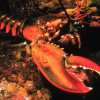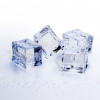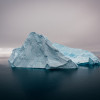Asteroids are chunks of rocks flying through outer space, as made famous by the blockbusters Deep Impact and Armageddon, and they can range in diameter from a few centimetres to a thousand kilometres. Every so often, they shed off fragments of rock, which sometimes fall to earth as meteorites. And now two meteorites recently unearthed in the Antarctic have rewritten the book on how asteroids form.
Planets like the Earth have a molten core, with plates of crust on the surface that can move around. These tectonic plates rub together and create friction, forming volcanoes. And we see certain types of rocks created by heat, known as igneous rocks, turning up in these areas. One type of igneous rock is called andesite, and until now, the only place it was known in the solar system was on Earth. But now andesite has turned up in these new meteorites - and researchers have seen nothing like them before.
 What's even more interesting is that andesites were only thought to form in relatively large planets, as they require large-scale processes such as plate tectonics to cook them up. But asteroids are pretty small in astronomical terms, so the researchers thought the new meteorites might have come from another planet, or even the moon. But analysis of the oxygen molecules in the rocks showed that they must have come from an asteroid. The team also discovered that they were more than 4.5 billion years old, suggesting they formed just after the birth of our solar system..
What's even more interesting is that andesites were only thought to form in relatively large planets, as they require large-scale processes such as plate tectonics to cook them up. But asteroids are pretty small in astronomical terms, so the researchers thought the new meteorites might have come from another planet, or even the moon. But analysis of the oxygen molecules in the rocks showed that they must have come from an asteroid. The team also discovered that they were more than 4.5 billion years old, suggesting they formed just after the birth of our solar system..
The researchers think that the parent asteroid that produced the meteorites was larger than 100 kilometres in diameter, which might hold enough heat to melt some of the rocks within it. But it wouldn't be big enough to have large-scale plate tectonics. The scientists suggest that melted rocks within the asteroid bubbled up to the surface, solidifying and forming andesites, which then broke off to make the meteorites. So it shows that plate tectonics isn't the only way to make these rocks, which could shed light not only on the birth of asteroids, but on the formation of our own planet.










Comments
Add a comment